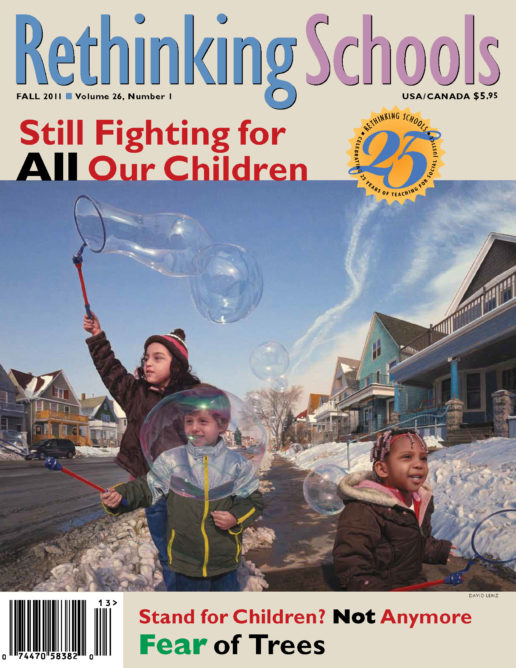Preview of Article:
‘Before Today, I Was Afraid of Trees’ – Rethinking Nature Deficit Disorder
Illustrator: Scott Bakal
The last week of February turned out to be the peak of the maple-sugaring season that winter, and an inch of snow remained on the ground as the juniors in my chemistry class disembarked from the bus. Kevin Kopp, our guide, met us with empty buckets, and he talked about the trees as we took a short walk around. The students ran their hands over the bark of the oaks, beeches, and maples with an uncharacteristic quietness as our guide talked about the different types of trees in downtown Trenton’s Cadwalader Park.
For the moment, it was possible to imagine that we were somewhere other than urban central New Jersey. To many of my students it was a revelation that we were not actually standing in a natural forest, but in a place where each of the towering trees had been purposefully planted decades ago. Their questions led to a discussion about how trees in urban environments not only look nice, but also help clean the air and lower energy costs by reducing the amount of sunlight absorbed by city surfaces on hot days.
When Kevin pointed out holes in one tree drilled by yellow-bellied sapsuckers, a group of students began racing from tree to tree, seeing who could be the first to find and run their fingers over undiscovered sapsucker holes. Another group raised their eyes to the treetops, looking for the birds. Kevin held up the metal spout and asked if anyone would like to hammer in the first tap.
“Ain’t it gonna hurt the tree?” asked one of my more solemn students. Kevin assured him that it wouldn’t. We tapped two trees that day, and everyone who wanted a turn hammering got one. When the first bucket was finally hung from the tap, the students were clearly less than impressed with the leisurely drip, drip, drip of the watery tree sap. After explaining that the buckets would fill over the next few days, Kevin promised to bring them to us at school.

